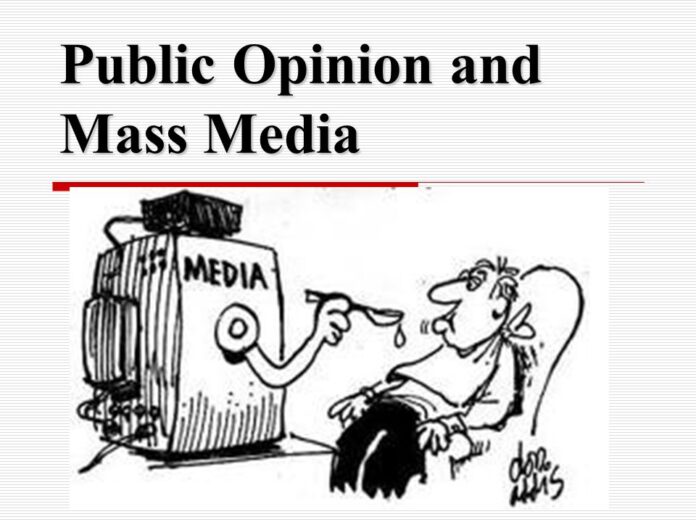In the modern world, media holds tremendous power in shaping public perception, influencing opinions, and framing narratives. Its role as an information disseminator is crucial in any society. However, the rise of Hindutva ideology in India has raised concerns about the objectivity and fairness of media reporting, as it can perpetuate stereotypes and prejudices against minority communities.
Media’s Influence on Public Perception:
Media is often referred to as the fourth pillar of democracy due to its role in informing the public, holding those in power accountable, and facilitating informed decision-making. In India, a diverse and pluralistic society, media has the added responsibility of fostering harmony and understanding among different communities. It serves as a bridge that connects people from various backgrounds and helps them understand each other better.
The media is very important to Indian society. Consider it to be the fourth pillar of democracy, following the executive, the judicial system, and the legislative branch. Its responsibility is to inform everyone, monitor the performance of those in positions of authority, and assist us in making wise decisions.
Even so, it goes beyond. India is a country where individuals from all walks of life and with various upbringings and religious convictions coexist. It resembles a lovely tapestry of diversity. Additionally, the media has a specific responsibility since it acts as a bridge to link these varied populations.
Take on a friend who doesn’t share your culture or celebrates the same holidays as you. You could occasionally have communication issues. The media enters the picture here. It serves as a translator, making it easier for you and your buddy to comprehend each other’s beliefs, traditions, and worldviews.
So, when you read a newspaper or watch the news, it’s about more than simply learning something; it’s also about creating a feeling of community. It’s about ensuring that, despite the fact that we are all unique, we can recognize and value those distinctions.
The media’s function is similar to that of a storyteller who tells tales from many cultures and worldviews. It acts as a sort of mediator, preventing disputes from arising from misconceptions. Most significantly, it acts as a companion, assisting us in seeing the world from the perspective of others.
The media’s role in India, where variety is our strength, is to foster peace and understanding. Building bridges across communities and ensuring that our differences improve our lives rather than separating us is more important than merely reporting the news. The next time you read a newspaper or watch the news, keep in mind that our varied society is held together by more than just words and pictures.
Hindutva’s Dominance and Biased Reporting:
Hindutva, a right-wing nationalist ideology, has been gaining prominence in India’s political and social landscape. As it has grown in influence, it has also found its way into media organizations, leading to biased reporting. This partiality can manifest in several ways:
- Stereotyping Minority Communities
Biased media reporting often involves the portrayal of minority communities, such as Muslims and Christians, in a negative light. They are sometimes depicted as potential threats or as outsiders, perpetuating stereotypes that undermine social cohesion.
- Reinforcing Prejudices
Media has the power to either challenge or reinforce societal prejudices. When media outlets prioritize sensationalism over objectivity, it can intensify existing biases, further dividing communities along religious lines.
The Impact on Minorities
The consequences of biased reporting are far-reaching and detrimental, particularly for minority communities in India.
- Erosion of Trust
Biased reporting erodes trust in media institutions. When minority groups perceive that they are being unfairly represented or targeted, they may lose faith in the media’s ability to provide accurate information and hold the powerful accountable.
- Polarization and Social Tensions
Media biases can exacerbate social tensions and polarization. When different religious or ethnic groups are portrayed as antagonistic or incompatible, it can lead to mistrust, discrimination, and even violence.
Fostering Objective and Inclusive Media
Addressing the issue of biased reporting is vital for the integrity of media and the harmony of society. Several measures can be taken to promote fair and balanced journalism:
- Media Literacy Programs
Educating the public about media literacy can empower individuals to critically analyze news sources, identify biases, and demand balanced reporting.
- Ethical Journalism
Media organizations should adhere to ethical journalism standards, which include impartiality, accuracy, and fairness. Editors and journalists should be trained to recognize and eliminate biases from their reporting.
Conclusion
The influence of the media on public opinion cannot be emphasized. Media must continue to be a uniting rather than a dividing force in India, where variety is a strength. Because of Hindutva’s supremacy, preconceptions and biases towards minority populations have been reinforced through media coverage. Media outlets and journalists must put objectivity, impartiality, and the ethical standards of journalism first to create a society that is more inclusive and peaceful. This will guarantee that the media remains a foundation of democracy that promotes tolerance, understanding, and solidarity among all facets of society.




